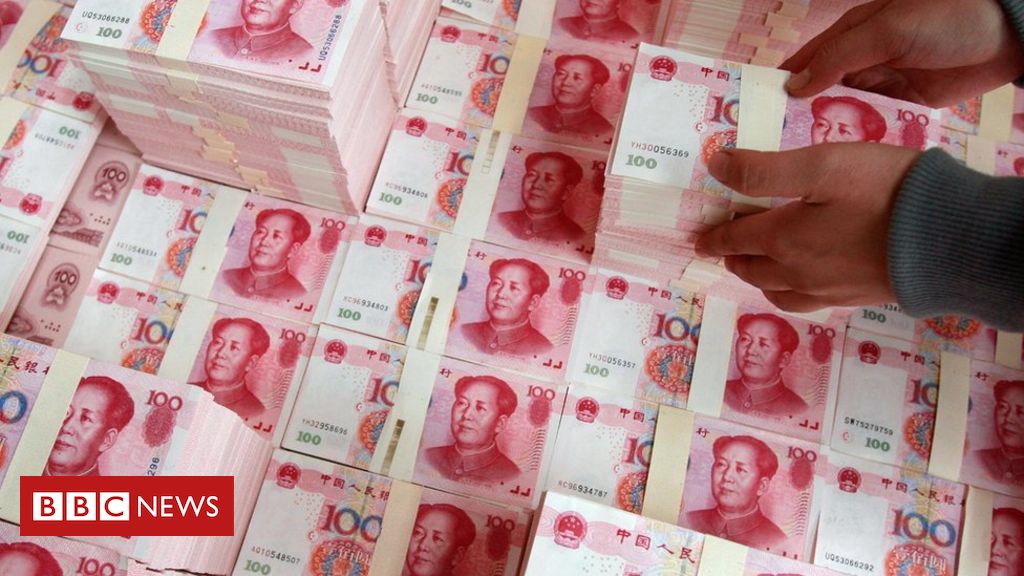Contents:


This tool then fashions a trend indicator, which rises and falls within these extreme values. RSI and moving average convergence divergence are both momentum measurements that can help traders understand a security’s recent trading activity. Generally, when the RSI indicator crosses 30 on the RSI chart, it is a bullish sign and when it crosses 70, it is a bearish sign. Put another way, one can interpret that RSI values of 70 or above indicate that a security is becoming overbought or overvalued.
Is Rush Street Interactive Inc (RSI) a Stock to Watch After Losing -7.59% This Week? – InvestorsObserver
Is Rush Street Interactive Inc (RSI) a Stock to Watch After Losing -7.59% This Week?.
Posted: Wed, 05 Apr 2023 19:45:33 GMT [source]
In other words, we are using the concept of support and resistance, but applied to the RSI instead of the price chart. As you see, the market has to move quite a bit for us to exit the strategy. This will lead to that quite a few trades will start to go in your direction, but revert before your exit level is reached.
This article also serves as a beginners guide for everything related to the relative strength index RSI. We took a lot of time to create this content with details and examples to help you become better traders. A buy signal is then generated, and a 5 vs. 14 cross should happen when the 5 period is oversold . When the RSI 5 crosses below and becomes lower than the RSI 14, it means that recent prices are declining. A 5 vs. 14 cross should occur when the 5 period is overbought . Experienced traders may find that their trading performance greatly benefits from combining an RSI trading strategy with Pivot Points.
RSI double bottom signal and double top signal
To sum up, the RSI measures the speed of an asset’s price changes and is used in technical analysis as a momentum indicator. As a result, it can be a powerful tool for determining trend reversals. Divergence.A bearish divergence or bullish divergence occurs when the indicator line goes in the opposite direction to the price chart. A bullish divergence implies that the price of an asset is making new lows in comparison to the previous low, but the RSI indicator is making higher lows.
The traditional period setting of “14” can be modified, yielding a more sensitive gauge, accompanied by false-positive signals, as well. To heed his advice, you need to be disciplined and stick to a strategy based on indicators like the RSI. The RSI is classified as an oscillator since the resulting curve fluctuates between values of zero and 100.
RSI buy and sell signals
When the line graph exceeds 70, we see a red shaded region. This region isoverbought zoneor we can say that the index is heavily bought and is ready for a downward correction. RSI is based on the difference between the average closing price of a stock on up days and on the down days. Wilder recommended a time period of 14 days to calculate RSI.

i was wrong about speed reading: here are the facts originally published the RSI in his book, New Concepts in Technical Trading Systems. Since then, the indicator has become popular among many traders in various markets, including stocks, futures, options, and currencies. Just like other indicators, the signal quality will also depend upon the characteristics of the underlying security. Relative strength index should also be used in conjunction with other indicators and technical parameters to generate better and more confirmed trading signals.
Reading Buy & Sell Signals Via Divergence
A trader might sell when the RSI crosses below the overbought line . Varying the time period of the Relative Strength Index might increase or decrease the number of buy and sell signals. The relative strength index can be used to amplify trading strategies by making more informed decisions on market entry and exit points. Generally, an RSI reading of 70 or above indicates overbought conditions. Conversely, a reading of 30 or below points to an oversold situation. However, these traditional levels can be altered to fit the particular security better.
In either case, https://1investing.in/ deemed a reaction or reversal imminent. The RSI is most typically used on a 14-day timeframe, measured on a scale from 0 to 100, with high and low levels marked at 70 and 30, respectively. Short or longer timeframes are used for alternately shorter or longer outlooks.

You can’t set the levels with the accuracy of a few decimals. This tab allows you to set the indicator visualization on all timeframes or some of them. The levels value the value of the levels with precision to the fourth decimal place.
N is one of the settings that you would use in charting platforms like TradingView or MetaTrader. This 3-part series on the RSI will teach you everything you need to know about this popular trading indicator. The RSI indicator closes below 30 before rising higher and above the 30 barriers.

This, and how to interpret RSI divergences, is all contained on the next page. For example, during an uptrend, the RSI is likely to stay above 30 and should frequently hit 70. On the other hand, during a downtrend, it is rare to see the RSI exceed 70; instead, the indicator frequently hits 30 or below. Relative Strength Index is a leading momentum indicator.
Conversely, if the RSI is more than 70, it means that it’s overbought, and that the price might soon decline. After a confirmation of the reversal, a sell trade can be placed. The RSI 50 level is the midline that separates the upper and lower territories. In an uptrend, you will usually see the RSI above 50, while in a downtrend, it is below the RSI 50 level. We will now discuss how to use the RSI indicator for Day Trading. For many traders, using the RSI indicator in a day trading strategy is very beneficial.
- The second vertical line points to a level where the RSI turns 81, a value which is considered overbought.
- Instead, it has already begun to turn to the upside near the beginning of June.
- The ATR in the Green oval is suggesting the same thing, but the RSI has entered oversold territory.
- A shorter look back period will make the RSI more sensitive, which can work well for certain trading strategies.
An RSI closer to 100 indicates a period of stronger momentum. A negative reversal is the opposite of a positive reversal. RSI forms a higher high, but the security forms a lower high. Again, the higher high is usually just below overbought levels in the area. Chart 12 shows Starbucks forming a lower high as RSI forms a higher high. Even though RSI forged a new high and momentum was strong, the price action failed to confirm as lower high formed.
From equities, fixed income to derivatives, the CMSA certification bridges the gap from where you are now to where you want to be — a world-class capital markets analyst. I/we have no stock, option or similar derivative position in any of the companies mentioned, and no plans to initiate any such positions within the next 72 hours. The RSI is a reflection of the speed at which the price of a security is being bid up or down. On the RSI chart, highs move lower, identified by a downward sloping line connecting the highs. On the RSI chart, lows move higher, identified by an upward sloping line connecting the lows. The RSI will decrease if the number of negative closes increases and if the magnitude of those closes decreases.
- This is done by spotting breakouts in the RSI indicator.
- It is very important to wait for this second low because it gets you in a better trade making position.
- As such, they can be used to trade RSI divergences by identifying recent trends in order to spot the signs of trend reversals.
- On the RSI chart, highs move lower, identified by a downward sloping line connecting the highs.
- The main point is to practice trade and get familiar with this indicator and its nuances.
- It is basically a move to oversold levels and then a higher low above oversold levels.
Unlike RSI divergences and positive-negative reversals, swing rejections or failure swings are independent of price action, focusing solely on RSI for signals. Another price-RSI relationship that traders look for is positive and negative RSI reversals. Positive and negative reversals are the opposite of bearish and bullish divergences.